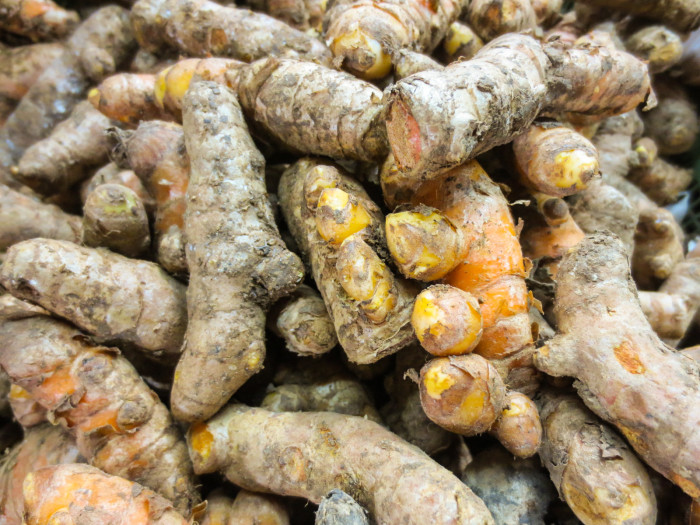How To Eat Turmeric (And Why You Should)
By now, you've probably heard about the health-boosting properties of a spice called turmeric. Made from dried, powdered turmeric root, it's what gives curries their potent, shirt-staining saffron yellow color. It's also consumed in its raw form, usually grated into fine, liquid-rich shreds like its relative, ginger root. Here's what you need to know on how to eat lots of turmeric, and why you should incorporate this ingredient every chance you get.
Long used in traditional Eastern medicine for its numerous benefits, turmeric can now be found in everything from smoothies and soups to teas, salad dressings and more. It's added to many brands of powdered and prepared yellow mustard to give them that extra-deep hue, and it's used in beauty products like skin creams and hair conditioners.
What does turmeric taste like? By itself, it's fairly unremarkable: subtle and mild with earthy notes of ginger and capsicum. But its scientifically backed benefits outweigh what it adds to food. Turmeric contains a high concentration of a compound called curcumin, which has antioxidant properties and can help treat inflammation and swelling in muscles and joints and reduce fatty buildup in vital organs. Preliminary research suggests curcumin may slow the spread of — and possibly prevent — some kinds of cancer, as well as liver and heart disease.
While definitive studies are being conducted, the information available indicates that turmeric is likely an extra-healthy addition to your diet. Your Indian and Middle Eastern grocer should carry fresh turmeric, though you may luck out at an Asian market as well. Look for small, firm, even-toned roots without blemishes or dark spots. The flesh under the thin, fibrous skin should be the same hue as a sweet potato.
Since curcumin is a fat-soluble compound, the most effective way to get raw turmeric into your system is by combining it with fat and black peppercorns. Why pepper? It contains piperine, a compound that has been proven to drastically increase the body's ability to absorb curcumin through the bloodstream. Curries that include turmeric typically call for the raw or shredded root to be cooked in oil or clarified butter to extract its color, flavor and curcumin (and almost always call for a spice blend that features black peppercorns as well).
A little too much for you? The easiest way to get started is by whipping up a mug of turmeric tea, also known as "golden milk." It's simply milk simmered with juiced or shredded fresh turmeric and a little coconut oil. Powdered turmeric will work if you can't find fresh. Season it with sugar, cinnamon, honey, ginger, peppercorns or other ingredients to amp up the flavor.
This post has been updated.




